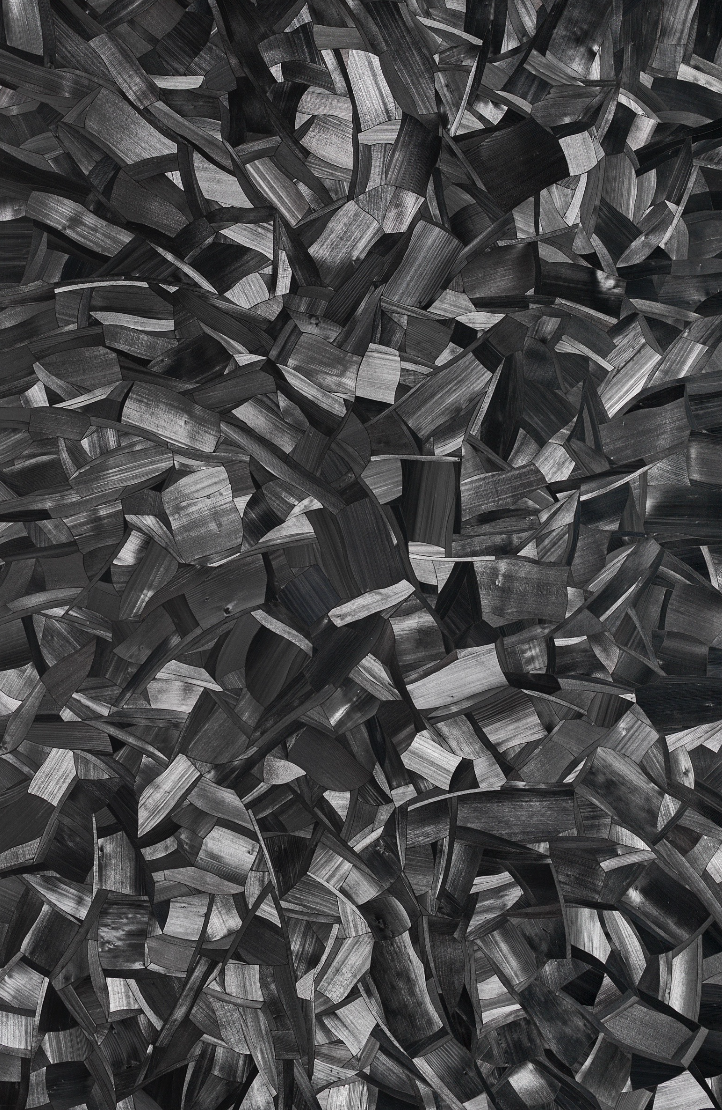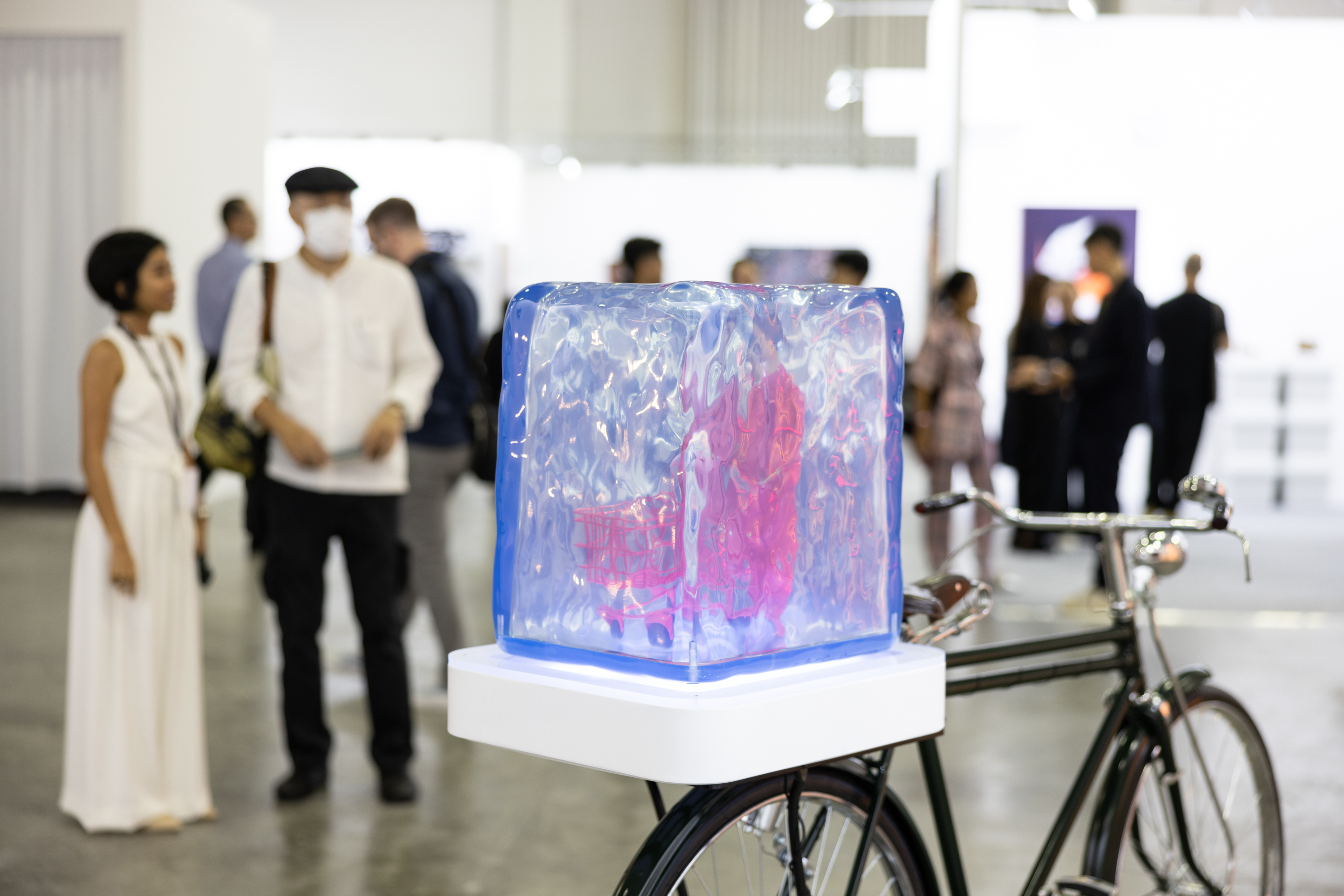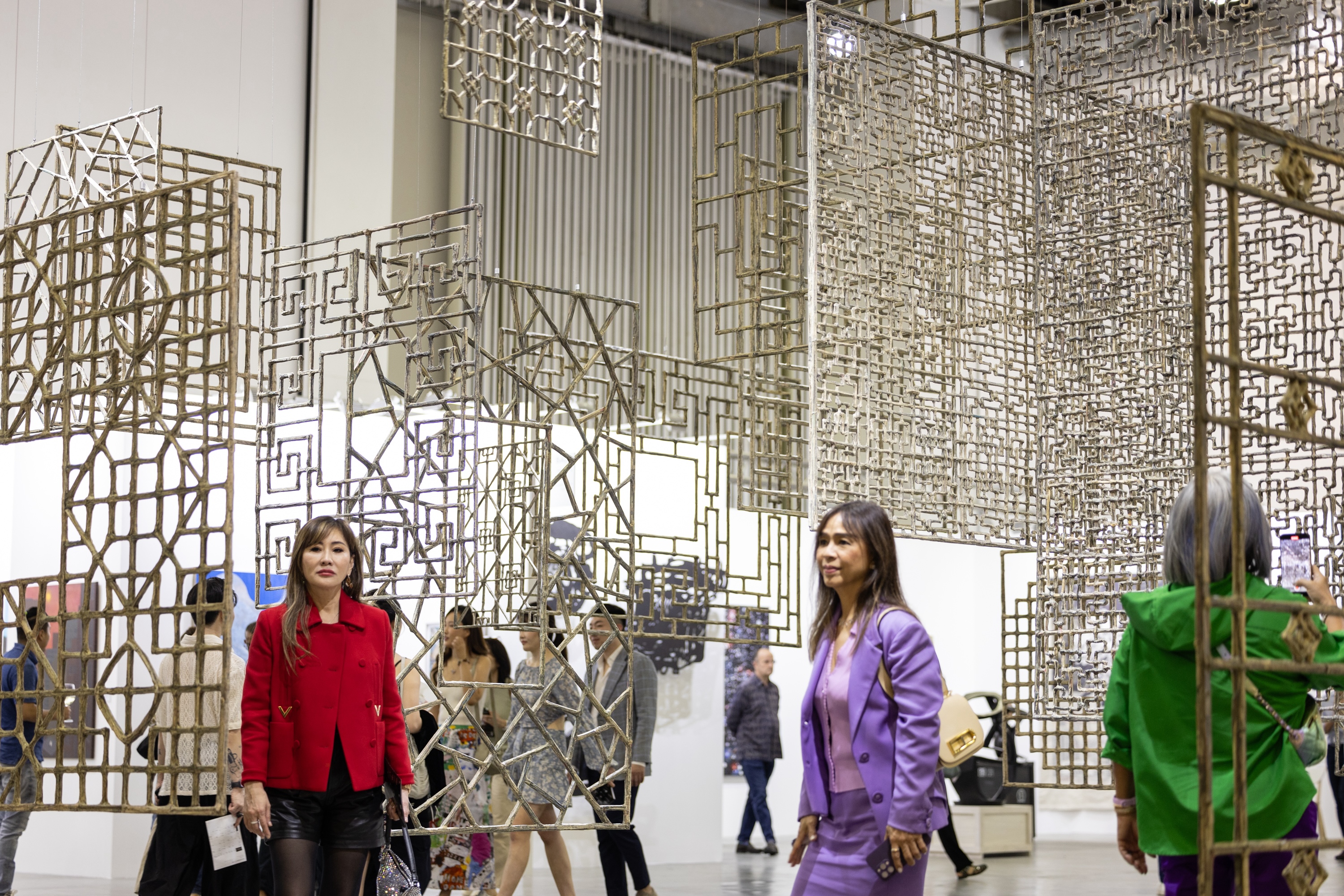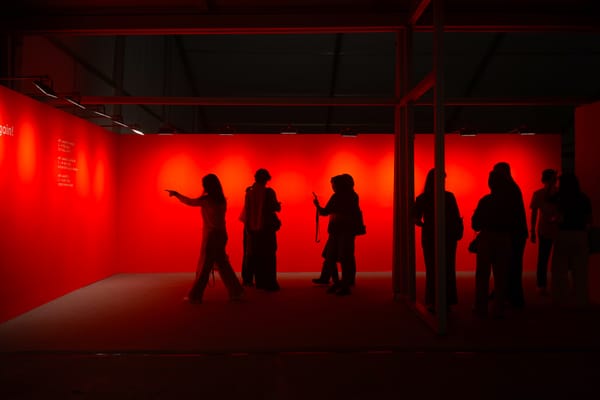Market
Navigating the Intercontinental Straits: Art SG and SEA Focus


*updated on Feb 6, 2024.
In recent years, Singapore has rapidly become the region’s favorite city among global asset and wealth management firms, as the strained relationship between China and the United States has caused financial firms to seek a getaway from the risks of possible sanctions and embargos from the two feuding superpowers. Singapore’s warm air of optimism comes from the influx of new moneyed immigrants despite the recessionary winds hitting the region caused by the dwindling growth rate of the Chinese economy.
In its second edition, Art SG (January 19–21) is still in its early development, as the number of participating galleries dropped from 164 in its debut year to 114 this year—perhaps approaching an appropriate scale that reflects the market’s size. Many collectors and institutional representatives were spotted among visitors to the Sands Expo and Convention Centre at Marina Bay, including local collectors Albert Lim and Linda Neo, Pierre Lorinet, Kim and Lito Camacho, Simon Cheong, and Jim Amberson, as well as regional collectors like Haryanto Adikoesoemo from Indonesia; Dato' Noor Azman Mohd Nurdin from Malaysia; Ratch Osathanugrah from Thailand; Patrick Sun from Hong Kong; Michelangelo and Lourdes Samson from the Philippines; Shunji Oketa from Japan; Thomas Shao from China; as well as Rudy Tseng from Taiwan.
Many institution representatives across the globe have also visited the fair, such as Aaron Cezar, the founding director of Delfina Foundation in London; Aaron Seeto, the outgoing director of Museum MACAN in Jakarta; Judith Greer, the director of international programs for Sharjah Art Foundation in the United Arab Emirates; Pi Li, the head of Tai Kwun Contemporary in Hong Kong; Sook-Kyung Lee, the director of the University of Manchester’s Whitworth Art Gallery and curator of the Japan Pavilion at the Venice Biennale; Stefano Rabolli Pansera, the director of Bangkok Kunsthalle; and Zoé Whitley, the director of Chisenhale Gallery in London.
Despite the 30-percent reduction in the number of participating galleries, Art SG in 2024 perhaps served as a cooling-down period from the frenetic anticipation of the post-pandemic moment in early 2023 and provided a more realistic perspective basis for the fair’s future growth. Meanwhile the fair’s first preview day (January 18) still maintained a strong sales record: “Whilst business is done right up to the final whistle on Sunday, galleries have reported to us that sales have got off to a promising start with some solid early transactions boding well for the rest of the week,” said Magnus Renfrew, the cofounder of Art SG.

Korean art was popular at Art SG. On day one, Johyun Gallery of Busan managed to sell a collection of charcoal paintings by Lee Bae on canvas and paper with prices ranging from USD 50,000 to 180,000. Leading Korean gallery Kukje found a buyer for Kyung-Ah Ham’s North Korean-embroidered silk-on-cotton chandelier SMS Detail DSR 02-04 (2018) for a price in the range of USD 30,000 to 36,000. Lehmann Maupin (New York/London/Seoul) sold two paintings by Lee Bul in the range of USD 200,000 to 300,000 as well as a painting and a sculpture by Korean sculptor Kim Yun-Shin, both within the range of USD 60,000 to 90,000. Ken Tan, the director of Lehmann Maupin, expressed his excitement about the results, saying the gallery was, “thrilled to have had a successful fair, not only placing works in prominent Asian collections but making new connections with collectors from Southeast Asia and beyond.”
Although Art SG has positioned itself as the gathering place of the Southeast Asian art market, there was an absence of Vietnamese galleries with a stronger presence of East Asian and Western contemporary art in the fair overall, which is reflected in sales reports voluntarily provided by galleries. European gallery Thaddaeus Ropac (London/Paris/Salzburg/Seoul) succeeded in selling German artist Anselm Kiefer’s painting Wer jetzt kein Haus hat, baut sich keines mehr, (2021–22) for a whooping EUR 1.1 million (USD 1.2 million), the highest among initially reported purchases in 2024. “We had strong sales during the fair, including works by Anselm Kiefer, Alex Katz, James Rosenquist, Lee Bul, Oliver Beer, Heemin Chung, among others, affirming the evolving market here,” stated Dawn Zhu, the director of Asia of Thaddeus Ropac.
Additionally, the homegrown Richard Koh Fine Art (Singapore/Bangkok/Kuala Lumpur) sold pieces by the ever-in-demand Thai artist Natee Utarit, as well as almost all paintings by Malaysian artist Justin Lim and Singaporean artist Ruben Pang, all in the range from USD 20,000 to 180,000. The other galleries with a strong Southeast Asian presence, such as Gajah Gallery, sold works by Singaporean sculptor Han Sai Por, the late I Gusti Ayu Kadek Murniasih of Indonesia, and the Singapore-based Jane Lee, all with prices undisclosed.

Another regional gallery with a regional focus at Art SG was Yavuz Gallery (Singapore/Sydney), where the works of Abdul Abdullah, Pinaree Sanpitak, and Manit Sriwanichpoom “were placed with institutional collections” by the end of the VIP preview as well as a total of more than 20 works by Alvin Ong, Nicholas Ong, Ayka Go, and Karen Black were sold to collectors in the range from USD 5,000 to USD 40,000 during the second day. Many Southeast Asian artworks at the art fair were priced at a competitive edge compared to their Western counterparts. The Western artworks, however, still captured the collectors’ wallets despite the relatively small focus at the fair.

Apart from the galleries, several large-scale installations located within the fair were sights to be seen, including the Sarawak-born Malaysian artist Marcos Kueh’s tapestries Woven Billboards: Nenek Moyang (Part of Kenyalang Circus series) (2023), which tells the cultural identity of Borneo; and British-Chinese artist Gordon Cheung’s bamboo and newspaper-made Chinese window sculpture Home (2024), reflecting upon China’s rapid urbanization and the meaning of home. Art SG here has provided a stage for emerging artists from the region to showcase their originality.
%20.jpeg)
While Art SG is the new, bigger entrant on the scene, the selling platform SEA Focus (January 20–28) has staked out its own regional-focus and market position since it was founded by Singapore’s long-running STPI gallery in 2019. Held at the Tanjong Pagar Distripark near the cargo terminals, SEA Focus brought 22 galleries to the industrial storehouse-turned studio for a boutique art fair. As the name has suggested, SEA Focus spotlights regional, Southeast Asian artists, and their works are presented in a half-art fair, half-exhibition setting. This year’s edition was titled “Serial and Massively Parallel” and curated by John Tung around the theme of human development in a time of great technological development.
Judging by its theme, one might assume there would be a substantial presence of media and digital art in SEA Focus of the kind that has emerged lately in the form of new technologies and virtual spaces. Instead, in SEA Focus, this idea of “technology” is interpreted as the tools and materials that have been used and applied throughout human civilization in parallel to the digital revolution we are currently experiencing. Therefore, artworks here instead showcase how artists managed to seek new languages from the already-existing technology throughout human history, especially in Southeast Asia.
_small.jpg)
For instance, the Ho Chi Minh City-based, artist-led platform Sàn Art brought drawings on the vintage magazine, the Strive to survive till dawn series (2019), by Nguyen Duc Phuong as well as other ink, pencil, and watercolor on paper works by other Vietnamese artists. Indonesian gallery ISA Art Gallery presented their local artist and weaver A. Sebastianus Hartanto’s Butiran Dari series (2023) of batik printed on archived photographs on cotton.
Among the dozens of artworks being shown in SEA Focus, the most significant features would probably be the installation version of Thai artist Apichatpong Weerasethakul’s video-installation A Conversation with the Sun (2022) by Bangkok CityCity Gallery, shown in a separate room dedicated to the hanging white cloth installation from above. Within the tightly connected space between the galleries, SEA Focus feels like a showcase of Southeast Asian artists rather than a typical art fair, despite many of their works appearing in other fairs and institutions.
%E2%80%9D,%202022%20(2).jpeg)
While many of the galleries showing in Singapore across the two fairs will be investing further in the regional market during Art Basel Hong Kong and Art Central in late March, perhaps both events will serve as the prelude for what the rest of the year might bring to the economy and the cultural industries at large. If so, a further cooldown for well-established artists might be expected, but interest in emerging and midcareer artists will continue to rise. Asian collectors might either buy locally or seek premium artworks from bluechip galleries. While two-dimensional works are still dominating the market, mediums other than oil and acrylic paintings, such as tapestry, embroidery, and weaving, are providing an alternative to the composition of colors.
Alex Yiu is associate editor at ArtAsiaPacific.







